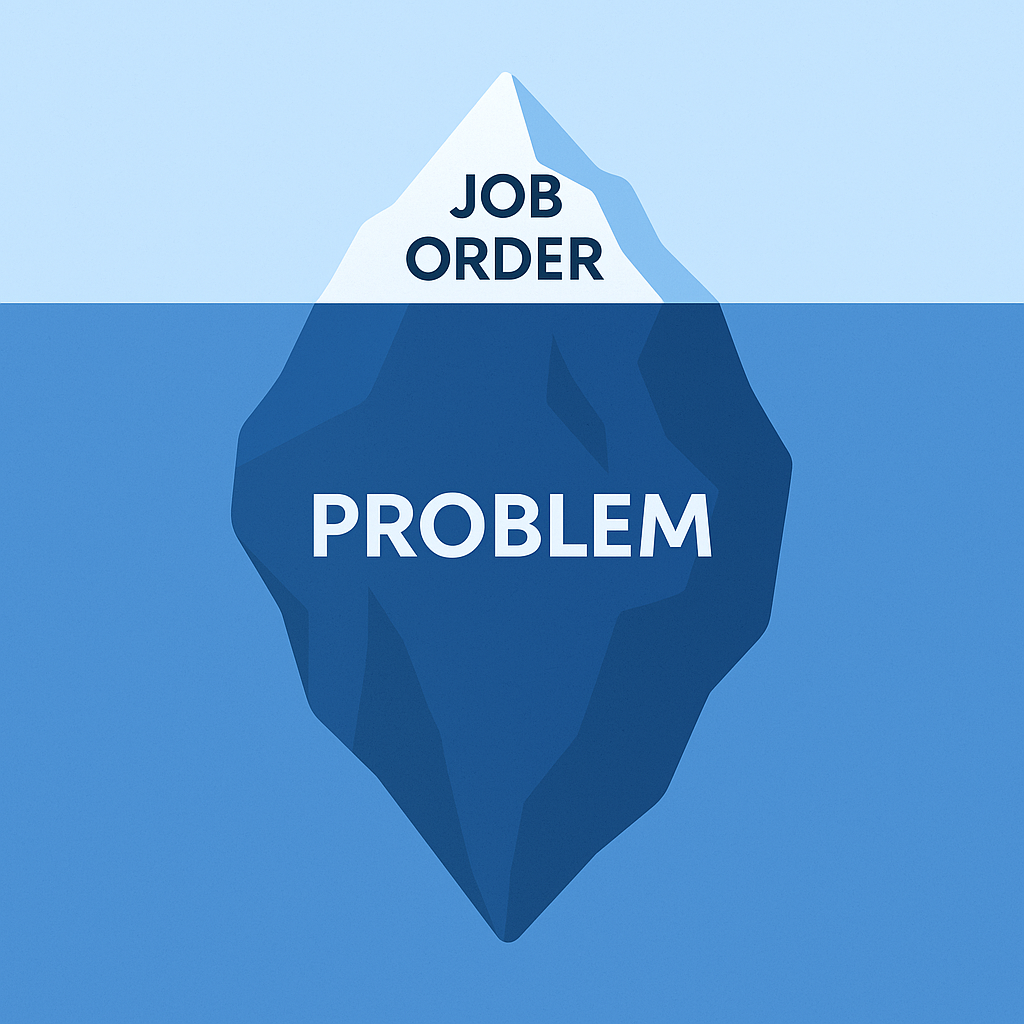Selling With Your Consultant
In my previous post, How to Prevent Unexpected Contract Terminations, I shared how systemizing consultant and client check-ins at key milestones...
3 min read
![]() Dan Fisher
:
May 4, 2025 9:21:10 AM
Dan Fisher
:
May 4, 2025 9:21:10 AM

In this post I’m going to share with you what building an outbound sales cadence really taught me—about structure, behavior, and why most sales teams struggle to execute consistently.
By building a strong outreach framework and teaching reps how to work, you get predictable activity, cleaner pipelines, more at-bats, and a higher probability of hitting quota.
The problem is most leaders build strategy, but don’t teach execution.
We assume that once the cadence is written, reps will know what to do and how to do it.
In reality, they don't.
Not because they’re incapable—because no one ever taught them.
Most managers focus on what to do. The great ones obsess over how it gets done.
Here’s what I learned while building and rolling out a real-world outbound cadence:
We tackled the fundamentals:
✔️ Defined buyer personas
✔️ Selected the right sales channels (call, email, LinkedIn DM, posting, commenting)
✔️ Designed a consistent outreach cadence (timing, frequency, and follow-ups)
✔️ Built the messaging—from cold call openers and 1:1 sales emails to LinkedIn content frameworks and marketing emails
It was smart, strategic work. It was fun.
But here’s what really stood out:
Building the cadence was easy. Getting reps to run the cadence—consistently, confidently, correctly—was the hard part. What shocked me was how detailed we had to get.
We couldn’t just say “Send a LinkedIn message” or “Follow up in HubSpot.”
We had to break everything down to the atomic level:
Every. Single. Step.
And I don’t say that to throw shade at the reps. These are smart, hungry, hardworking people. The problem wasn’t motivation. It was that no one had ever taught them how to work—not just sell, but organize, prioritize, and execute consistently
We had to build the muscle.
Here are just a few of the micro-habits that tripped reps up—and that most managers never think to train on:
Follow-Up & Task Management
➤Writing vague follow-up tasks like “call back” instead of clear, contextual actions:
➤ “Send a case study after Angela’s Tuesday board meeting—follow up on ETL conversation.”
➤Letting tasks pile up in HubSpot with no time blocked to actually complete them.
➤Not tagging task types (call, email, research), making it impossible to batch and focus.
➤Skipping reminders, snoozes, or deadlines to prioritize what matters most.
➤Scheduling and showing up to a meeting without knowing why the client agreed to the meeting or understanding their expectations.
Call Prep & Execution
➤Calling without a written opener—leading to weak intros and low confidence.
➤Getting caught flat-footed by common objections like “Just send me info.”
➤Documenting calls with vague entries like “good call” or “scheduled follow-up,” without noting decisions made, pain uncovered, or agreed next steps.
➤Not having a clear outcome in mind for the call—or even a reason for calling that day.
We quickly learned, we had to review it all—every day.
Not to micromanage. To coach. To build muscle memory.
Because again, it wasn’t laziness. It was a gap in training.
➤No one teaches you how to work.
➤Not in school. Not in most jobs. And certainly not in sales onboarding.
Time-blocking, task management, CRM hygiene, running your day with intention—these aren’t "nice to haves." They’re critical skills that drive sales performance. And most people aren’t born with them. They need to be taught.
The same goes for managers.
Most managers mention these things in passing—
➤“Log your activity.”
➤“Follow the cadence.”
➤“Make sure to update your notes.”
But very few teach these habits. Even fewer reinforce them.
And almost none build a culture where those behaviors are expected, inspected, and celebrated every day.
So what happens?
Everyone works hard… but not necessarily effectively.
Tasks slip. Pipeline decays. Quota gets missed.
Reps don’t just need strategy. They need structure. And managers can’t just point to the structure. They have to build behavior around it.
The cadence we built worked. But the real breakthrough wasn’t the framework. It was helping reps develop the habits that bring it to life. And that takes more than a playbook.
It takes teaching.
It takes coaching.
It takes reinforcing.
Daily.

In my previous post, How to Prevent Unexpected Contract Terminations, I shared how systemizing consultant and client check-ins at key milestones...

About a year ago, I was serving as the fractional revenue leader, managing sales and recruiting for a client.

If you’ve worked in staffing long enough, you’ve been trained to chase job orders.